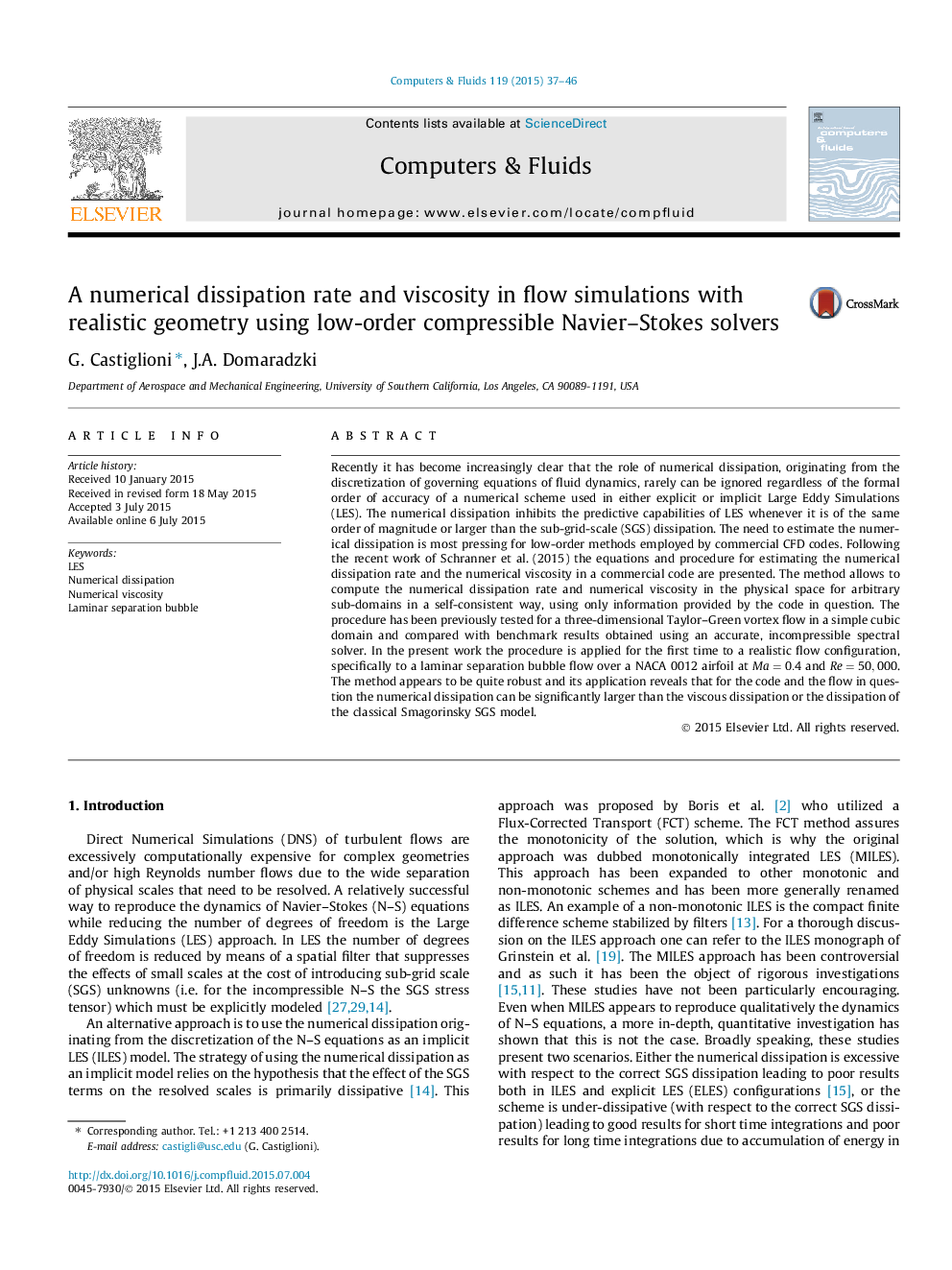| کد مقاله | کد نشریه | سال انتشار | مقاله انگلیسی | نسخه تمام متن |
|---|---|---|---|---|
| 761547 | 1462691 | 2015 | 10 صفحه PDF | دانلود رایگان |

• The present study evaluate the numerical dissipation rate in a commercial solver.
• To quantify the numerical dissipation the method of Schranner et al. has been used.
• The case analyzed is a LES of laminar separation bubble around an airfoil.
• The numerical dissipation is significantly larger than the explicit SGS contribution.
Recently it has become increasingly clear that the role of numerical dissipation, originating from the discretization of governing equations of fluid dynamics, rarely can be ignored regardless of the formal order of accuracy of a numerical scheme used in either explicit or implicit Large Eddy Simulations (LES). The numerical dissipation inhibits the predictive capabilities of LES whenever it is of the same order of magnitude or larger than the sub-grid-scale (SGS) dissipation. The need to estimate the numerical dissipation is most pressing for low-order methods employed by commercial CFD codes. Following the recent work of Schranner et al. (2015) the equations and procedure for estimating the numerical dissipation rate and the numerical viscosity in a commercial code are presented. The method allows to compute the numerical dissipation rate and numerical viscosity in the physical space for arbitrary sub-domains in a self-consistent way, using only information provided by the code in question. The procedure has been previously tested for a three-dimensional Taylor–Green vortex flow in a simple cubic domain and compared with benchmark results obtained using an accurate, incompressible spectral solver. In the present work the procedure is applied for the first time to a realistic flow configuration, specifically to a laminar separation bubble flow over a NACA 0012 airfoil at Ma=0.4Ma=0.4 and Re=50,000Re=50,000. The method appears to be quite robust and its application reveals that for the code and the flow in question the numerical dissipation can be significantly larger than the viscous dissipation or the dissipation of the classical Smagorinsky SGS model.
Journal: Computers & Fluids - Volume 119, 22 September 2015, Pages 37–46